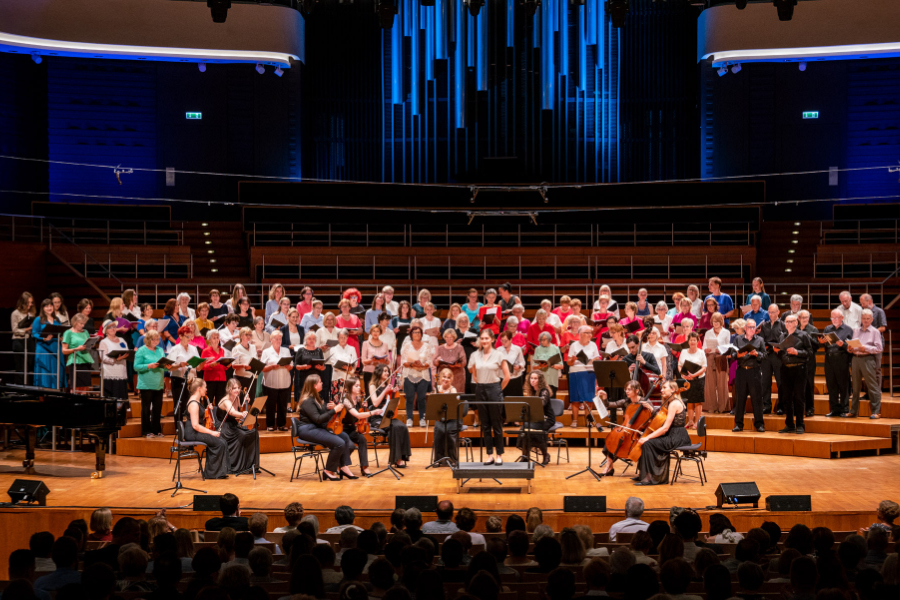Bridge
The album was recorded by the Lutosławski Quartet, an ensemble performing primarily 20th- and 21st–century music, with an emphasis on the dissemination of Polish music (compositions by, among others, Lutosławski, Bacewicz and Szymanowski, as well as one of the quartet members – Marcin Markowicz). As a group of versatile artists open to musical inspirations, they combine contemporary repertoire with works of Classical, Romantic and jazz music.
Album premiere: 2012
Publishers: Witold Lutosławski Wrocław Philharmonic, CD Accord
Performers: Lutosławski Quartet
In 1944, Dmitri Shostakovich wrote in a letter to a friend: “Chamber music requires of the composer the most perfect technique and the greatest depth of thought. I would not be too far from the truth if I affirmed that, sometimes, behind the ‘sparkle’ of the orchestral sound is hidden a lack of imagination. The richness of sound offered by a contemporary symphony orchestra is unavailable to chamber ensembles.” For him, however, the “poverty of sound” was not a shortcoming of chamber music, because the music he created for a string quartet could best be described as a drama told by the instruments, in which the solo line-up allows for an intimacy of expression that is difficult to imagine in an orchestra. (…) Markowicz wrote about his music: “It is an expression of my experiences, thoughts and feelings.” This is the source of all music, but these experiences, feelings and conclusions from reflections vary. The composer created the String Quartet No. 3 in a form reminiscent of a rondo. Nostalgic adagios return three times, interspersed with ‘Bartók-rock’ episodes. In the last movement, echoes of motorised ‘modernity’ are heard in the background. This procedure can be understood symbolically as the result of reflection on the ways in which sophistication and simplicity can coexist. It can also be treated as a traditionally known combination of musical thoughts from the entire piece in the finale (e.g. from Shostakovich’s String Quartet No. 3). Apart from surprises, the greatest pleasure in listening to music comes from recognising what we have already heard. (…) “A refined gentleman who is extremely polite, who says various unimportant pleasantries in a muffled voice – as the journalist Stefania Szurlejowna described Karol Szymanowski – he is harmonious and subdued. There is nothing sharp and angular about it. His voice and the colour of his clothes are subdued, in other words – “symphonie en gris”. However, Szymanowski’s music was by no means “en gris”. On the contrary, it was full of colours. String Quartet No. 2 is also a multi-coloured sound image – although mostly in pastels – painted with four string instruments. Paradoxically, although Szymanowski composed chamber music sporadically (for him, piano and orchestra took priority), he created the most original music for violin.
Danuta Gwizdalanka










